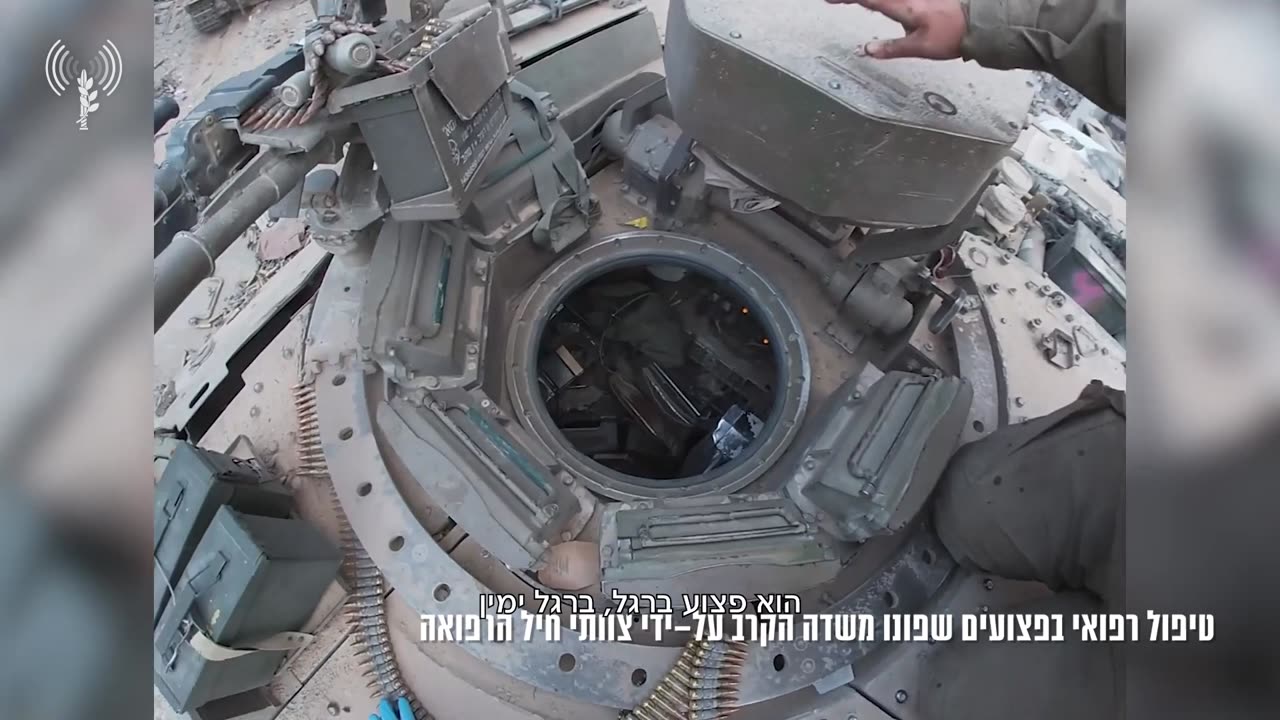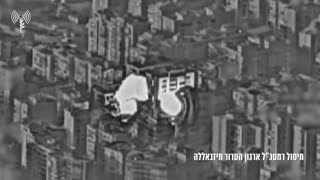Premium Only Content

The IDF Technological and Logistics Directorate publishes new data on its
The IDF Technological and Logistics Directorate publishes new data on its operations amid the ongoing fighting in the Gaza Strip and in Lebanon since the beginning of the war, from the average time to take wounded soldiers to hospitals, to how many tanks have returned to service after being badly damaged.
According to the military, the Logistics Corps carries out supply operations every single day to troops operating in Gaza and Lebanon, totaling over 2,000 from the ground, six airdrops, and a handful via the sea.
The supply missions bring thousands of tons of equipment, food, ammunition, fuel, and other supplies to troops on the frontlines. In recent weeks, some 300,000 winter-related items were delivered to troops, according to the IDF.
The Technology and Maintenance Corps reports that tanks, armored personnel carriers, and other armored vehicles across the military are at 88 percent competency after nearly 14 months of fighting.
The military says that 90% of tanks and APCs damaged by anti-tank missile fire or large explosive devices amid the fighting have been repaired and returned to service.
On average, armored vehicles that sustained heavy damage take some 20 days for repairs before they are returned to service. Some very heavily damaged armored vehicles undergo a long recovery process.
More minor issues with the IDF's armored vehicles are fixed in the battle zone or at forward operating bases or logistics centers, without needing to bring the tanks or APCs out of Gaza or Lebanon for repair. The IDF says that 90% of the minor issues are fixed in the battle zone.
The Medical Corps reports that some 5,300 wounded soldiers have been treated amid the ground offensive in the Gaza Strip and another 700 in Lebanon. For comparison, during the entire 2006 Second Lebanon War, 833 soldiers were treated, and in the 2014 Gaza War, 709 soldiers were treated.
The case fatality rate (CFR) — the proportion of wounded who end up dying — has also significantly decreased compared to past wars, with the Medical Corps reporting that it stands at a CFR of 6.9% in Gaza and 7.1% in Lebanon. For comparison, the Second Lebanon War saw a CFR of 14.8% and the 2014 Gaza War saw 9.2%.
The Medical Corps attributes this lower rate to better and faster treatment for wounded soldiers, including the use of whole blood transfusions on the battlefield for the first time — some 300 soldiers have been given such transfusions so far — and that senior medical officers are stationed with every company, allowing the procedure and other life-saving treatment immediately without needing to wait to reach hospitals.
On average, according to the Medical Corps, senior medics are able to reach wounded soldiers within under four minutes during the current fighting, compared to 10-25 minutes on average in the Second Lebanon War.
In terms of bringing wounded soldiers to hospitals in Israel, the Medical Corps says that via helicopter it stands at 66 minutes on average from Gaza and 84 minutes from Lebanon, and with ground vehicles, 91 minutes from Gaza and 111 minutes from Lebanon.
-
 0:06
0:06
War-in-Israel
14 hours agoThe IDF confirms killing Hezbollah's de facto military chief Haytham Ali Tabatabai
19 -
 5:31:43
5:31:43
EricJohnPizzaArtist
4 days agoAwesome Sauce PIZZA ART LIVE Ep. #70: Movie Night featuring Dark Helmet!
49.4K8 -
 2:06:00
2:06:00
Joker Effect
5 hours agoMASSIVE UPDATES ON MY CHANNEL... what does 2026 look like? CHATTIN WITH WVAGABOND (The Captain).
30.5K2 -
 2:24:34
2:24:34
vivafrei
17 hours agoEp. 292: Bondi's Betrayal & Comey Judge Caught Lying! Crooks Acted Alone? Judicia Activism & MORE!
211K173 -
 8:06:14
8:06:14
GritsGG
10 hours ago#1 Most Warzone Wins 4015+!
146K2 -
 5:14:53
5:14:53
Due Dissidence
14 hours agoTrump SMITTEN By Mamdani, MTG RESIGNS, Hurwitz DOUBLES DOWN on CENSORSHIP, RFK Jr "Poetry" EXPOSED
40.9K34 -
 39:40
39:40
Tactical Advisor
11 hours agoUnboxing New Tactical Packs | Vault Room Live Stream 046
77.9K6 -
 3:30:58
3:30:58
elwolfpr
9 hours agoElWolfPRX Enters the Storm: First Winds
22.2K -
 14:59
14:59
MetatronHistory
1 day agoAncient Bronze Was Not the Way You Think
45.7K16 -

Misfit Electronic Gaming
10 hours ago $1.37 earned"LIVE" WolfPack hunting "ARC RAIDERS" Come Hang out with me.
16.5K